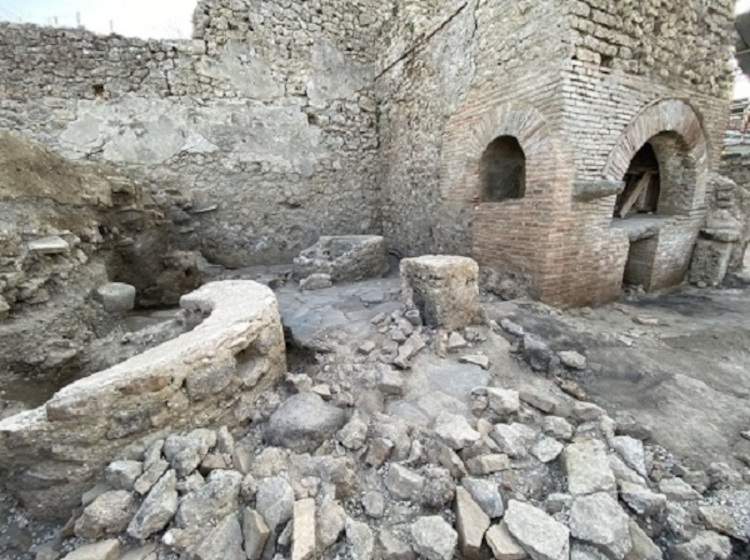In Regio IX, insula 10, of the Pompeii Archaeological Park, where excavations are underway as part of a larger project to secure and maintain the frontages bordering the as yet uninvestigated area of the ancient city, a emerged a room with no exterior facing, with small windows with iron grates to let light through and notches in the floor to coordinate the movement of animals, probably donkeys, forced to walk around blindfolded for hours to grind the grain needed to make bread. In fact, the environment is thought to have been a bakery, part of a district of the ancient city designated for bread-making: mills-bread factories where slaves and animals were subjected to backbreaking labor.
As already stated, the environment is devoid of doors and communication with the outside, except for a single exit that gives onto the atrium; not even the stable has road access as frequent in other cases. “It is, in other words, a space in which we have to imagine the presence of people of servile status whose freedom of movement the owner felt the need to restrict,” notes Pompeii Archaeological Park director Gabriel Zuchtriegel, in a multi-handed scholarly article published today in theE-Journal of Pompeii excavations http://pompeiisites.org/e-journal-degli-scavi-di-pompei/. “It is the most shocking side of ancient slavery, the one devoid of trusting relationships and promises of tampering, where one was reduced to brute violence, an impression that is fully confirmed by the closing of the few windows with iron grates.”
The area of the millstones is adjacent to the barn, characterized by the presence of a long manger.
A series of semicircular recesses in the volcanic basalt slabs were identified around the millstones. Given the strong strength of the material, it is likely that what at first glance might appear to be “footprints” are actually carvings made specifically to prevent draught animals from slipping on the pavement and simultaneously tracing a path, forming a circular furrow. The wear and tear of the various carvings can be ascribed to the endless rounds, always the same, carried out according to the pattern prepared in the pavement. “Iconographic and literary sources, particularly the reliefs from the tomb of Eurysaces in Rome, suggest that a millstone was usually moved by a pair consisting of a donkey and a slave. The latter, in addition to pushing the grindstone, had the task of inciting the animal and monitoring the grinding process, adding grain and taking flour,” Zuchtriegel explains.
The unearthed environment, with its evidence of hard daily life, complements the picture told in the exhibition The Other Pompeii: Common Lives in the Shadow of Vesuvius , which will open Dec. 15 at the Palestra Grande in Pompeii, dedicated to those individuals often forgotten by historical chronicles, the humble and the slaves, who made up the majority of the population and whose labor contributed in an important way to the economy, but also to the culture and social fabric of Roman civilization.
“In the final analysis,” the director concludes, “it is spaces like this that also help us understand why there were those who thought it necessary to change that world and why in the same years a member of a small religious group named Paul, later sanctified, wrote that it is better to be all servants, douloi which means slaves, but not of an earthly master, but of a heavenly one.”
 |
| A bakery emerges in Pompeii, bearing witness to the backbreaking labor of slaves and animals |
Warning: the translation into English of the original Italian article was created using automatic tools. We undertake to review all articles, but we do not guarantee the total absence of inaccuracies in the translation due to the program. You can find the original by clicking on the ITA button. If you find any mistake,please contact us.